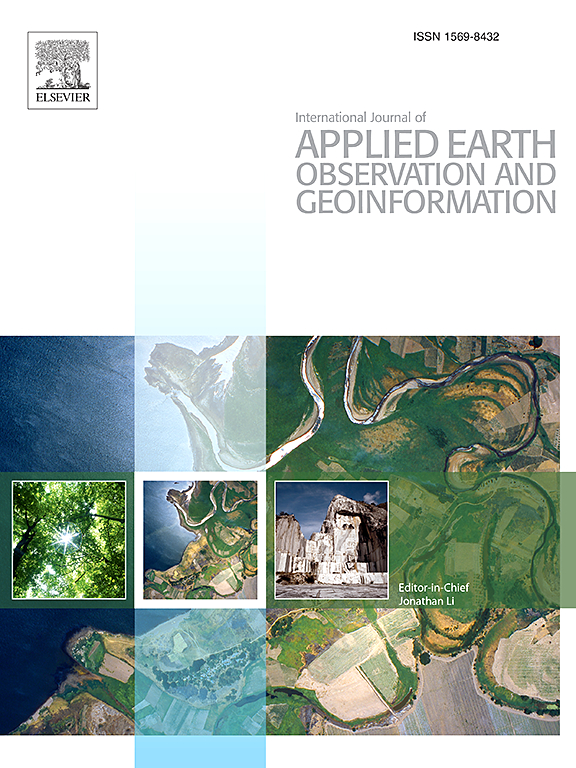结合多模态地理空间数据的门控图卷积神经网络用于森林类型分类
IF 7.6
Q1 REMOTE SENSING
International journal of applied earth observation and geoinformation : ITC journal
Pub Date : 2025-02-01
DOI:10.1016/j.jag.2025.104372
引用次数: 0
摘要
本文章由计算机程序翻译,如有差异,请以英文原文为准。
Combined gated graph convolution neural networks with multi-modal geospatial data for forest type classification
Forest type classification is essential for the monitoring and management of forests, with significant implications for environmental protection and the mitigation of climate change. However, challenges such as multiscale variations, heterogeneous boundaries, mountainous terrain, and unbalanced data sets hinder progress. This study aims to improve forest type classification through three approaches: (1) Multimodal geospatial data fusion; (2) transfer learning using the ImageNet 22K dataset to improve accuracy and address class imbalances; (3) a novel Gated Graph Convolution Neural Network (GGCN). Experiments were conducted at two study sites with varying tree species, management strategies, and climates. The results indicated that very high-resolution aerial photographs outperform open-source Sentinel-1 and Sentinel-2 datasets. The fusion of the original remote sensing bands with the Enhanced Vegetation Index (EVI) feature demonstrates the best composition across all datasets. This approach, which combines the original Sentinel-1 and Sentinel-2 bands with the EVI, significantly improves the performance of open-source remote sensing data sets. It provides a cost-effective alternative to expensive high-resolution images, which is particularly beneficial for rural areas and global applications. Furthermore, utilizing ImageNet 22K transfer learning improved accuracy in addressing class imbalances. The GGCN effectively preserved multiscale and spatial features at both study sites. In general, this integrated approach shows promising potential for achieving high precision in large-scale forest type classification.
求助全文
通过发布文献求助,成功后即可免费获取论文全文。
去求助
来源期刊

International journal of applied earth observation and geoinformation : ITC journal
Global and Planetary Change, Management, Monitoring, Policy and Law, Earth-Surface Processes, Computers in Earth Sciences
CiteScore
12.00
自引率
0.00%
发文量
0
审稿时长
77 days
期刊介绍:
The International Journal of Applied Earth Observation and Geoinformation publishes original papers that utilize earth observation data for natural resource and environmental inventory and management. These data primarily originate from remote sensing platforms, including satellites and aircraft, supplemented by surface and subsurface measurements. Addressing natural resources such as forests, agricultural land, soils, and water, as well as environmental concerns like biodiversity, land degradation, and hazards, the journal explores conceptual and data-driven approaches. It covers geoinformation themes like capturing, databasing, visualization, interpretation, data quality, and spatial uncertainty.
 求助内容:
求助内容: 应助结果提醒方式:
应助结果提醒方式:


